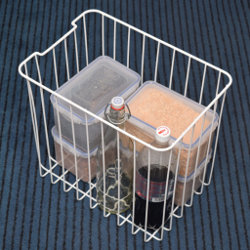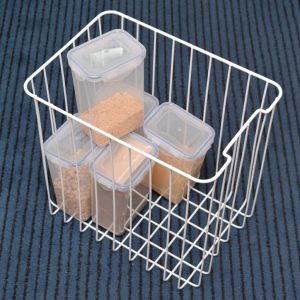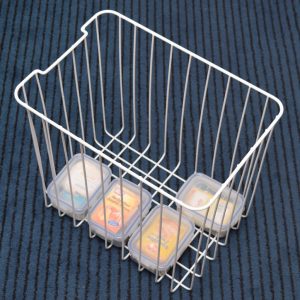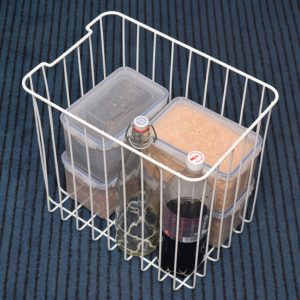Dedication
This is my first English blog post, and I’d like to dedicate this to my good friend Tom who got me started again with a post on his very nerdy, excellent (but mostly incomprehensible) blog on computer safety. (How to start blogging)
Fridge?
I always wondered whether a fridge in the car wouldn’t be a sensible thing. However, once I realized that only the expensive compressor-based fridges are worth the effort, it took me a while before I took the plunge in 2011.
We chose an Engel MR-040F (or Engel MR40F), its exterior is polypropylene which makes it cheaper than its steel counterparts. (But after 4 years I can say that this is absolutely sufficient for travel in Europe.)
Prices fluctuate, but at least for Germany, www.pieper-shop.de often has very reasonable prices and is very quick and helpful.
So we’ve got the fridge, and put it to good use over time – I wouldn’t go on holiday without it any more. Of course I could say a lot more, but then this article is not about the cooler, so I’ll leave it at the above.
Lock & Lock?
To properly use the fridge, we found that it makes sense to use the justifiedly praised Lock & Lock (shop.locknlock-usa.com) containers to separate foodstuffs inside. I tend to be faithful to products that have stood the test of time, so I won’t bother trying out other containers – it’s Lock & Lock, nothing else.
The containers are not very cheap, so I usually get a fixed set of containers, which can be had at affordable prices every now and then on either Ebay or Amazon.
Use
Over time, we learned some lessons, and I figured that at least for the owners of the above Engel fridge, it might be helpful to write up this page, so I did.
The intention is to help you find the L&L containers suited to your needs (and to your fridge) more easily – and not to waste valuable fridge space.
Note that L&L claims their containers are tight even when stored sideways or upside down. It’s not that I don’t trust them, but in general I try to avoid that with liquid content. Note that the suggestions below usually use the containers stored normally (except HPL818).
HPL838
This is the largest container we own. We use it at home only to store flour, no need to take it on holiday. But if you want to use it, here’s what you need to know:
| Length x Width x Height: | 29.5cm x 23.0cm x 18.5cm |
| Gross capacity: | 12.6 liters |
| Net capacity (claimed): | 9.0 liters |
| Max. number of containers per layer: | 1 |
| Max. number of layers: | 1 |
| Max. net capacity when only this type of container is used: |
9.0 liters |
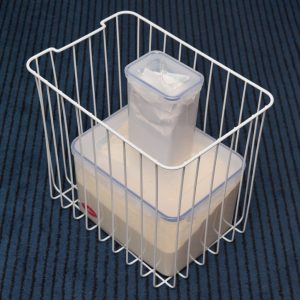
HPL838 below an HPL809. The latter is of the same height, you can see (hopefully) that a second HPL838 wouldn’t fit the box.
HPL836
Although not as high as HPL838 (but otherwise of equal size), I personally think that this container still is too large and unwieldy for holiday use. Here’s what you need to know:
| Length x Width x Height: | 29.5cm x 23.0cm x 11.8cm |
| Gross capacity: | 8.0 liters |
| Net capacity (claimed): | 5.5 liters |
| Max. number of containers per layer: | 1 |
| Max. number of layers: | 2 |
| Max. net capacity when only this type of container is used: |
11.0 liters |
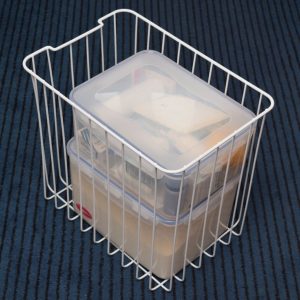
HPL836 atop an HPL838. Even if an HPL836 were used instead of the HPL838, a third HPL836 wouldn’t fit.
HPL818
HPL818 is almost perfect, but if you want to really fill your fridge, one container per layer needs to go upside down, see picture. Here’s what you need to know:
| Length x Width x Height: | 20.5cm x 13.4cm x 11.8cm |
| Gross capacity: | 3.2 liters |
| Net capacity (claimed): | 1.9 liters |
| Max. number of containers per layer: | 3 |
| Max. number of layers: | 3 |
| Max. net capacity when only this type of container is used: |
17.1 liters |
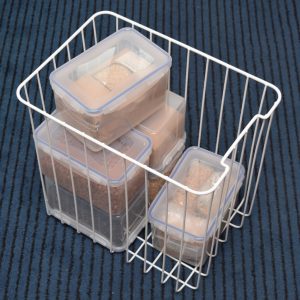
HPL818 is the container for packrats.One container per layer is upside down, but this way you can really fit 9 HPL818.
HPL809
Rather unwieldy in my opinion, but might find its uses. Here’s what you need to know:
| Length x Width x Height: | 13.5cm x 10.2cm x 18.5cm |
| Gross capacity: | 2.5 liters |
| Net capacity (claimed): | 1.3 liters |
| Max. number of containers per layer: | 6 |
| Max. number of layers: | 1 |
| Max. net capacity when only this type of container is used: |
7.8 liters |
HPL806
OK, this is a bit of a joke, nobody in his right mind would fill the fridge with 36 of these – but for small stuff they come in handy, so keep a few at hand. (They come in these sets anyway.) Here’s what you need to know:
| Length x Width x Height: | 13.5cm x 10.2cm x 5.2cm |
| Gross capacity: | 0.7 liters |
| Net capacity (claimed): | 0.4 liters |
| Max. number of containers per layer: | 6 |
| Max. number of layers: | 6 |
| Max. net capacity when only this type of container is used: |
12.6 liters |
In Real Life
I wouldn’t end this post without showing what seems sensible to me. We keep space free for beverages, not necessarily Diet Coke (the picture is faked), but with the kids two bottles of milk will quickly fill the empty space.
So we travel with 4 or 5 HPL818 containers and stack whatever else comes in between. This allows for well organized breakfasts or picknicks, my word on it.
